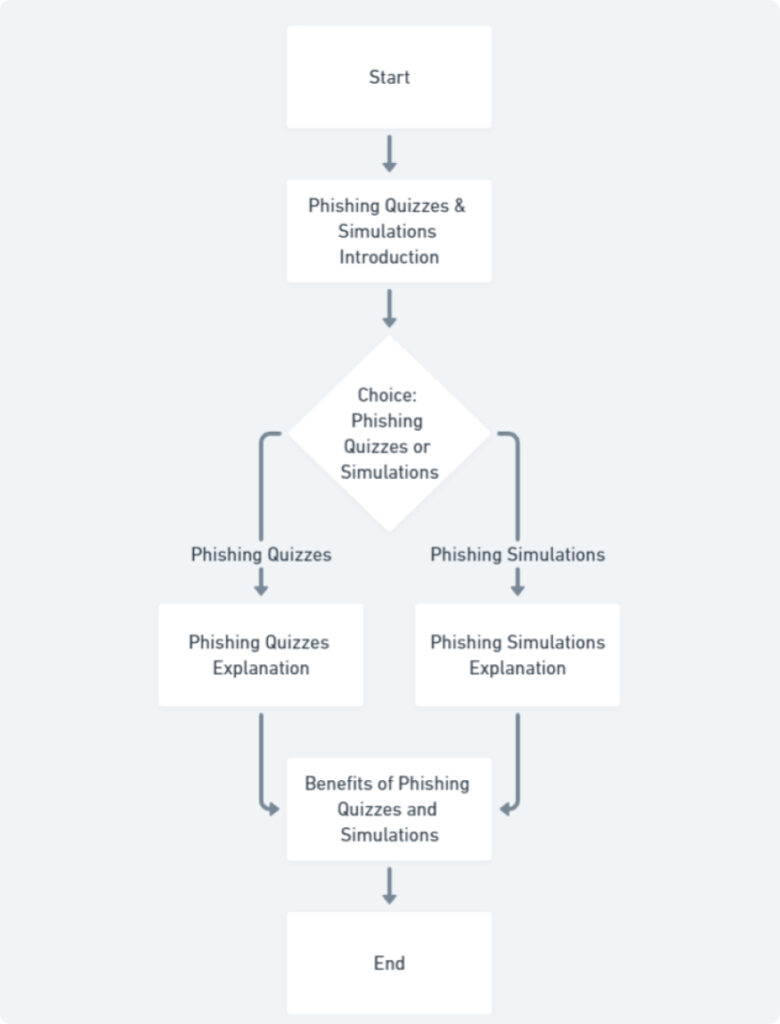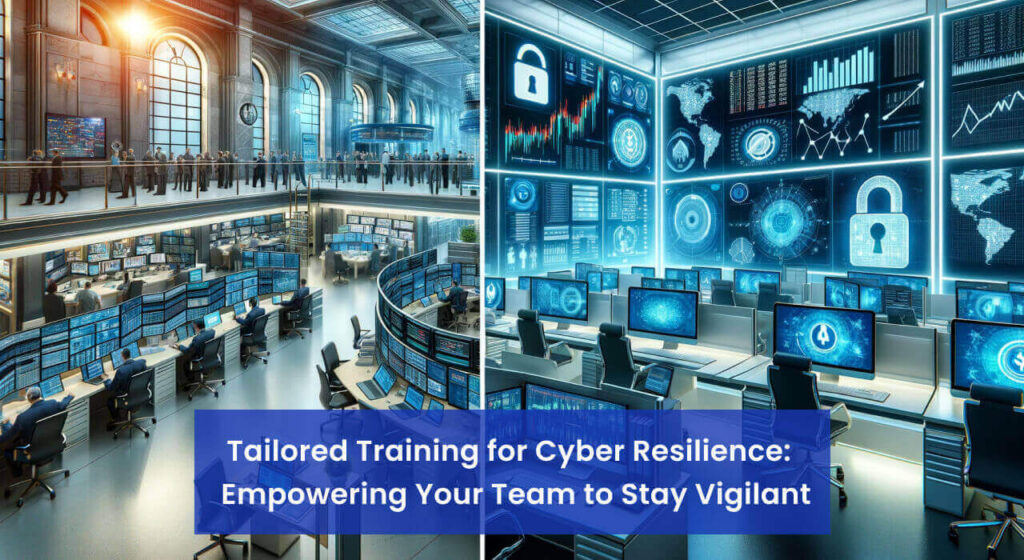
The Phishing Frenzy - Why Traditional Training Isn't Enough
The digital landscape has become a battleground, with cyberattacks escalating in both frequency and sophistication. Businesses of all sizes, from multinational giants to local mom-and-pop shops, are prime targets for these malicious incursions. A recent study by the ISACA (Institute of Internal Auditors) (https://www.isaca.org/)) found that a staggering 78% of businesses experienced a phishing attack in the past year, with the average cost per attack exceeding $36,000 (IBM X-Force Threat Intelligence Index 2023). These attacks often take the form of cleverly crafted emails designed to trick employees into clicking malicious links or divulging sensitive information.
Unfortunately, unsuspecting employees are often the weakest link in an organization’s cybersecurity defense. A 2023 report by KnowBe4 (https://www.knowbe4.com/), a leading cybersecurity training provider, revealed that human error plays a role in a staggering 85% of data breaches. Traditional cybersecurity training methods, reliant on lectures and static materials, often struggle to keep pace with evolving threats and maintain employee engagement. Here’s where a more dynamic approach enters the picture: phishing quizzes and simulations. These interactive exercises offer a realistic training environment, empowering employees to recognize and combat phishing attempts in the real world.
The Ripple Effect: The Devastating Costs of Phishing Attacks
The financial repercussions of a successful phishing attack can be crippling for businesses, impacting their bottom line in a multitude of ways. Data breaches, a frequent outcome of these attacks, expose sensitive customer information, intellectual property, and financial records. The Ponemon Institute’s 2021 Cost of Phishing Study (https://www.ponemon.org/) paints a stark picture, revealing that the average cost of a phishing-related data breach for businesses is a staggering $8 million. This figure encompasses not only the direct costs of data recovery and regulatory fines (which can be substantial for non-compliance with data protection regulations) but also the indirect costs associated with lost productivity, customer churn, and reputational damage.
Beyond the financial toll, phishing attacks can have a significant human cost as well. Employees who fall victim to a phishing scam often experience feelings of stress, anxiety and even shame. In severe cases, depending on the nature of the breach and the employee’s role, a phishing incident may even lead to job loss. The emotional and professional repercussions of these attacks highlight the importance of proactive measures to safeguard both the organization and its workforce.
Falling Short: The Limitations of Traditional Cybersecurity Training
While traditional cybersecurity training programs play a role in raising awareness, they often fall short in equipping employees to effectively counter real-world threats. These programs frequently rely on static methods like lectures, videos, and written materials, which can struggle to maintain employee engagement and knowledge retention over time. The passive nature of this approach can lead to a phenomenon known as security awareness fatigue, where employees become overwhelmed by information overload and struggle to apply learnings in practical situations.
Furthermore, traditional methods may not adequately address the evolving tactics of cybercriminals. Phishing attempts are becoming increasingly sophisticated, often employing social engineering techniques and mimicking legitimate sources to deceive unsuspecting users. Static training materials often fail to capture the nuance and adaptability required to recognize these ever-changing threats.
This highlights the need for a more dynamic and engaging approach to cybersecurity training. Phishing quizzes and simulations offer a unique opportunity to bridge this gap by providing employees with a realistic and interactive training environment.
Phishing Quizzes and Simulations: Bridging the Training Gap

Phishing quizzes and simulations represent a dynamic approach to cybersecurity training that transcends the limitations of traditional methods.
- Phishing Quizzes: These interactive assessments present employees with realistic phishing scenarios in a controlled environment. Employees are challenged to identify red flags and make informed decisions about suspicious emails, links, or attachments.
- Phishing Simulations: Simulations take the training a step further by immersing employees in a more immersive experience. Employees receive seemingly legitimate emails or messages designed to mimic real-world phishing attempts. Their actions, such as clicking a link or entering credentials, are tracked and analyzed, providing valuable insights into their decision-making process.

The benefits of incorporating phishing quizzes and simulations into your cybersecurity training program are numerous:
- Increased Employee Engagement and Interactivity: Unlike passive training methods, quizzes and simulations actively engage employees in the learning process. The gamified nature of these exercises fosters a sense of competition and encourages participation.
- Improved Knowledge Retention Through Real-World Scenarios: By replicating real-world phishing attempts, these techniques allow employees to apply their knowledge in a practical setting. This hands-on approach leads to improved knowledge retention and a sharper ability to identify phishing threats.
- Identification of Knowledge Gaps and Areas Needing Improvement: The results of phishing quizzes and simulations provide valuable insights into employee knowledge and behavior. Organizations can analyze data to identify areas where employees struggle and tailor future training programs to address specific vulnerabilities.
By creating a more engaging and interactive learning experience, phishing quizzes and simulations empower employees to become the first line of defense against cyberattacks.
Designing Effective Phishing Quizzes and Simulations

Crafting effective phishing quizzes and simulations requires a strategic approach that considers both content and delivery. Here are some key steps to ensure your training program delivers impactful results:
- Tailored Content is Key: One-size-fits-all training doesn’t work when it comes to cybersecurity. Simulations should mirror the types of phishing attempts your employees are most likely to encounter based on your industry and the tactics commonly employed by cybercriminals in your sector. For instance, a financial services company might incorporate simulations involving fake wire transfer requests, while a healthcare organization might focus on phishing attempts impersonating medical authorities.
- Catering to All Levels: Employees possess varying levels of cybersecurity knowledge. Offer a range of difficulty levels within your quizzes and simulations. This allows you to challenge seasoned employees with more complex scenarios while providing a foundation of understanding for those less familiar with phishing tactics.
- Learning from Mistakes: The learning process doesn’t end after a quiz or simulation. Provide clear and constructive feedback following each exercise. Explain what went wrong, highlight red flags that should have been identified, and reinforce best practices to combat phishing attempts.
- A Safe Training Ground: Emphasize that simulations are for training purposes only. Employees should feel comfortable participating without fear of negative consequences for falling victim to a simulated attack. This fosters a culture of open communication and encourages honest reporting of suspicious emails.
- Ethical Considerations and Transparency: Employee consent is paramount when conducting phishing simulations. Clearly communicate the program’s objectives and ensure employees understand the nature of the simulations before they participate. Additionally, consider establishing ethical boundaries, such as avoiding simulations that exploit personal information or cause undue stress.
By following these guidelines, you can develop a robust training program that leverages phishing quizzes and simulations to equip your workforce with the knowledge and skills necessary to combat cyber threats effectively.
Evaluating Your Cyber Training's Impact
Just like any successful business initiative, a well-designed phishing quiz and simulation program requires ongoing evaluation to ensure it’s achieving its desired outcomes. Tracking key metrics allows you to gauge the program’s effectiveness and identify areas for improvement.
Here are some crucial metrics to monitor:
- Phishing Click-Through Rates: Compare click-through rates on phishing attempts before and after implementing the training program. A decrease in click-through rates signifies a positive impact, indicating employees are becoming more adept at identifying phishing emails.
- Employee Performance on Phishing Quizzes: Analyze employee performance on phishing quizzes to assess their knowledge retention and ability to apply learned concepts. Over time, you should observe an improvement in quiz scores, reflecting a stronger understanding of phishing tactics.
- Reporting Rates of Suspicious Emails: Monitor the number of employees reporting suspicious emails following the training program. An increase in reporting suggests employees are more vigilant and confident in identifying potential phishing attempts.
In addition to these metrics, consider conducting post-training surveys to gather qualitative feedback from employees. These surveys can provide valuable insights into their experience with the program, identify areas for improvement and gauge their overall knowledge retention.
By consistently monitoring these metrics and collecting employee feedback, you can ensure your phishing quiz and simulation program remains a dynamic and effective tool in your organization’s cybersecurity defense strategy.
While phishing quizzes and simulations offer a proactive approach to cybersecurity training, it’s crucial to remain vigilant against the diverse tactics employed by cybercriminals. Social engineering scams, in particular, pose a significant threat to businesses of all sizes, with small businesses being prime targets due to their limited resources and security measures.
One of our articles delves into the realm of social engineering scams targeting small businesses, offering insights into common tactics, red flags to watch out for, and strategies to defend against these deceptive schemes. Learn how scammers exploit human psychology, the diverse methods they employ and the practical steps you can take to fortify your defences.
[Read more: Social Engineering Scams Targeting Small Businesses: How to Spot and Avoid Them]
Building a Robust Cybersecurity Defense
In today’s ever-evolving threat landscape, robust cybersecurity training is no longer a luxury, but a necessity. Traditional training methods, while valuable, often struggle to keep pace with increasingly sophisticated phishing tactics. Phishing quizzes and simulations offer a dynamic and engaging approach that empowers employees to recognize and combat real-world phishing attempts.
However, phishing quizzes and simulations are just one piece of the cybersecurity training puzzle. Complementary training methods such as password hygiene workshops and social engineering awareness programs further equip employees with the knowledge and skills required to navigate the digital landscape safely.
By implementing a comprehensive training program that incorporates diverse training methods, businesses can significantly bolster their cybersecurity defenses.
In conclusion, phishing quizzes and simulations, with their ability to foster engagement and knowledge retention, are a powerful tool in this arsenal. By investing in employee education, businesses can empower their workforce to become the first line of defense against cyberattacks. As the threat landscape continues to evolve, proactive and dynamic training approaches will be essential in ensuring the resilience of organizations in the face of cyber threats.
Categorized in:
Comments